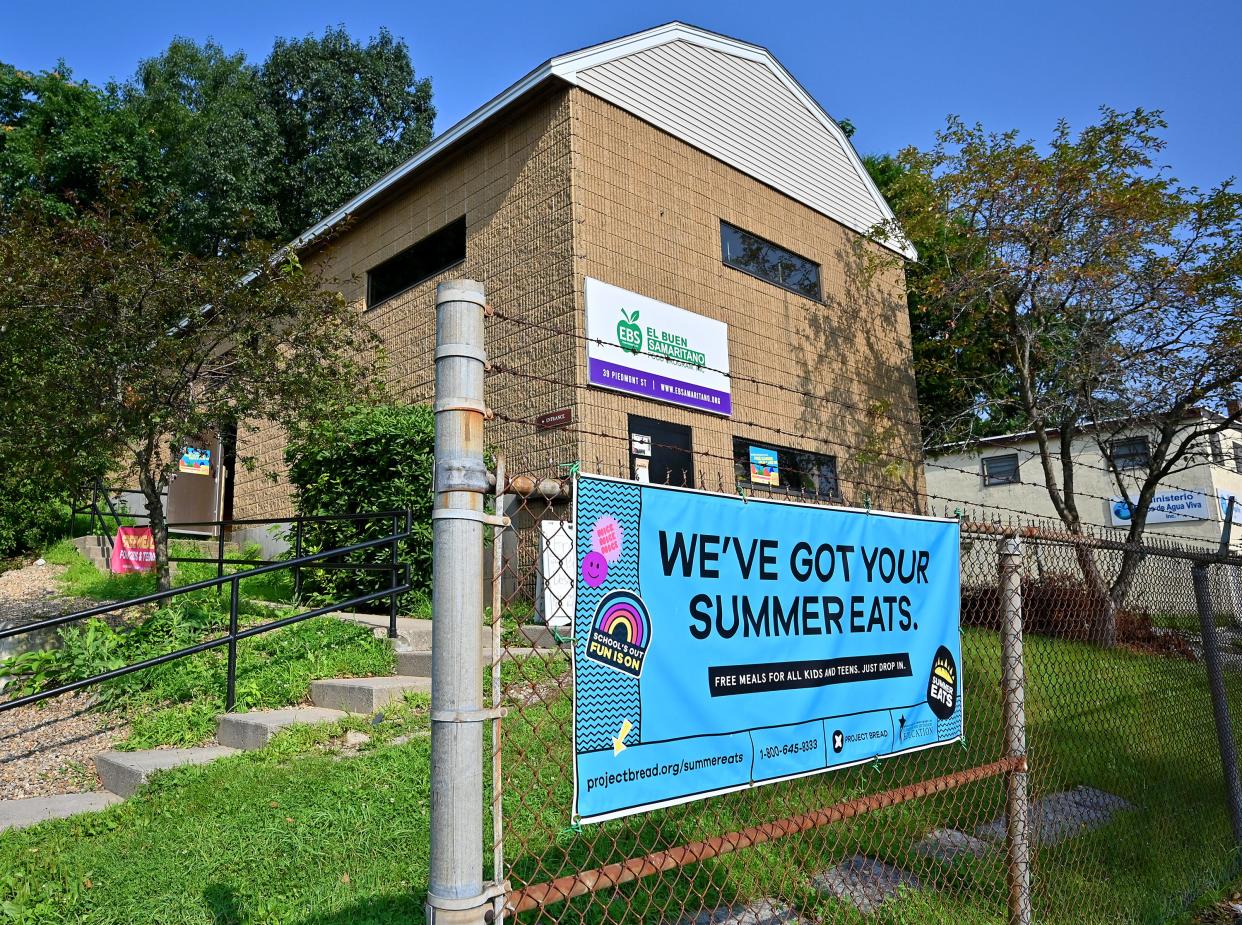Massachusetts college students can find help locating food resources

Checklists for college students abound from those issued by big-box stores to offerings by websites like Best Colleges, College Made Easy, Dormify or College Info Geek, listing items like linens, alarm clocks, lamps and even dorm décor.
But more important for all Massachusetts public college students is the information not listed on those sites: how to find food if they are hungry. And not just for late-night munchies but nutritious meals that helps them focus, study and learn.
“If students are hungry, they’re not learning,” said Sean Simonini, a senior at UMass Lowell who serves as the vice chair of the Board of Directors of MASS PIRG, a partner in the Hunger Free Campus Initiative.
State legislators took a giant step earlier this month in addressing childhood hunger by enacting a permanent universal school meals measure in the fiscal 2024 budget, allocating $172 million to fund the initiative. Legislators also included $1 million for the Hunger-Free Campus Initiative designed to jump-start the issue of hidden hunger experienced by more than a third of Massachusetts’ university students.
Proposed legislation would also offer technical assistance to public institutions to create a permanent framework for identifying and addressing food insecurity. The bill also encourages meal vendors on public state university, college and community college in Massachusetts to accept federal Supplemental Nutrition Assistance Program benefits.
But for now, what do students need to know?
The Massachusetts Department of Higher Education has a whole page dedicated to student basic needs security. In addition to explaining the program, it lists resources available at many community colleges as well as the UMass system and other public universities.
Kate Adams, the public policy manager at the Greater Boston Food Bank, said a visit to the Need Food page of the Greater Boston Food Bank’s website will direct people to local food pantries and food resources. For example, entering one of Somerville’s zip codes, 02143, resulted in 20 places to find food in the city; from soup kitchens run by faith-based organizations to the organization Food For Free.
The GBFB website also has a link to the federal SNAP with videos and texts, as well as a phone number, for help in filling out the forms. Also on the site, assurances that applying for SNAP benefits do not deprive others of federal funding, that they are not a “loan” that requires reimbursement, and that being accepted for SNAP also qualifies people for other benefits including discounts for utilities and the state’s Health Incentive Program.
And in the western reaches of the state, students can access information through the Food Bank of Western Massachusetts.
“Each campus has its own resources,” Adams said, explaining that some colleges are very proactive in identifying and addressing the problem of food insecurity while others may be lagging behind. Once the proposed legislation passes, and Adams is hopeful it will, every public institution of higher learning will be directed to create a mechanism to identify and remediate the hidden hunger.
“The bill is enjoying bipartisan support,” said Rep. Andres Vargas, D-Haverhill, one of the sponsors of the bill with Rep. Mindy Domb, D-Amherst. The Senate’s companion bill is sponsored by Sen. Joan Lovely, D-Salem.
Simonini suggests that students seek out the help they need and ask campus advisers how they can access food resources.
“If you don’t know where to go:,ask,” Simonini said, “Ask, Who can I talk to about food access? Once you find the right person, be comfortable asking for help. The biggest obstacle to overcome is pride.”
Schools have already invested in these supports, Simonini pointed out.
At Simonini's school, UMass Lowell has the Strive Pantry, and Bunker Hill Community College has DISH Pantry. Many of the pantries offer more than just food. Local housing supports can be listed, as well as other places to access food. Some even list services for pregnant or new mothers, and for older, nontraditional or returning students who support families.
“Resources vary greatly by campus,” Simonini said. Supports can be short-term or last through a four-year college career. These long-term supports could be in the form of SNAP or WIC benefits or even just regular deliveries of on-campus meals.
Some campuses have created a single point of contact system that puts all information in one place, so students do not have to jump from website to website, department to department, to get the information and services they seek.
Big on certain campuses is the meal swipe donation program, which allows students who have not taken all the meals on their paid-for plan to donate the leftovers to a bank. Students without meal plans can access those donations.
“Students go to school to learn, study and advance their careers; to obtain economic mobility,” Simonini said. “If they are hungry, they aren’t studying.”
Hungry students often face the choice between textbooks or meals, extracurricular activities, clubs, internships or food.
In discussing his bill, Vargas noted that the state had taken steps to address the issue of childhood hunger.
“When kids graduate, they don’t stop being hungry when they go to college,” Vargas said.
Food resources at community colleges and state universities
Bristol Community CollegeMobile Food Market
Bunker Hill Community CollegeSingle Stop
Cape Cod Community CollegeFamily Pantry at Cape Cod CC
Greenfield Community CollegeGCC Food Pantry
Holyoke Community CollegeThrive Center
Mass. Bay Community CollegeStudent Nourishment & Care Committee
Massasoit Community CollegeMassasoit Food Pantry
Middlesex Community CollegeMCC Food Pantry
Mount Wachusett Community CollegeMWCC Food Pantry
North Shore Community CollegeEmergency Resources
Northern Essex Community CollegeFood Pantries
Quinsigamond Community CollegeFood Pantry & Resources Center
Roxbury Community CollegeProject Access
Springfield Technical Community CollegeCenter for Access Services
Bridgewater State UniversityFood Bank 4 U
Framingham State UniversityStudent Resources
Salem State UniversityStudent Advocacy
Westfield State UniversityCommon Goods
UMass BostonU-ACCESS
UMass DartmouthArnie's Cupboard
UMass LowellNavigators Food Pantry
This article originally appeared on Telegram & Gazette: Food insecurity: an impediment to learning even in college

